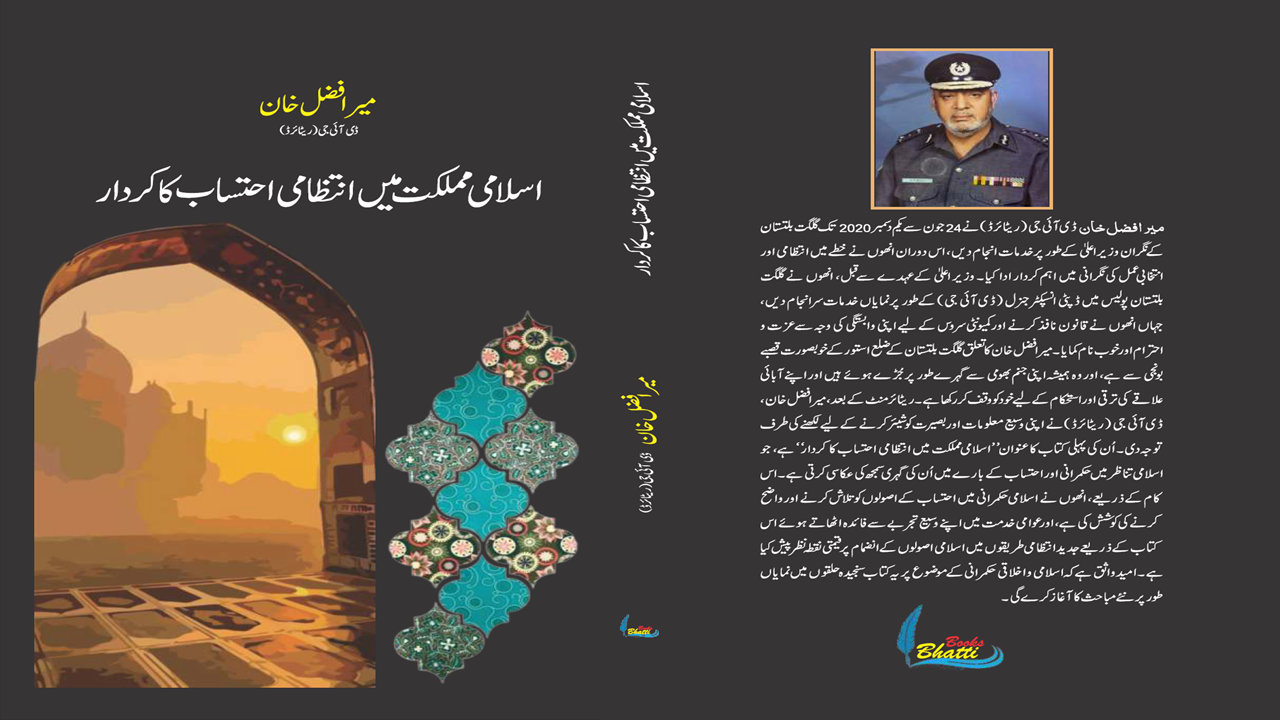The concept of accountability has always been a cornerstone of effective governance, transcending cultures and historical epochs. This book embarks on a comprehensive exploration of administrative accountability, tracing its evolution from ancient civilizations to the transformative period of early Islamic governance. By examining the various dynasties, judicial roles, fiscal responsibilities, and the influence of public opinion and consultation, we aim to uncover the rich tapestry of accountability mechanisms that have shaped Islamic governance over centuries.
In Chapter 1, we start by examining the practices of administrative accountability in various cultures and civilizations around the world before the emergence of Islam. This historical exploration provides a comprehensive overview of how different societies managed and enforced responsibility among their administrative and governing bodies.
We look into ancient civilizations such as the Mesopotamians, Egyptians, Greeks, and Romans, among others. Each of these societies had its own unique methods for ensuring that officials and administrators acted in the best interests of the state and its people. For instance, in ancient Mesopotamia, the Code of Hammurabi outlined laws and consequences for those who failed in their duties. In Egypt, the concept of Ma’at emphasized truth, balance, and order, guiding the conduct of officials. Greek and Roman systems introduced more formalized approaches to accountability, with checks and balances in place to prevent abuses of power.
By understanding these pre-Islamic practices, we establish a baseline for how governance and accountability were perceived and implemented across different regions and eras. This sets the stage for Chapter 2, where we explore the revolutionary changes brought about by the foundations of Islamic governance. Here, we see how Islamic principles introduced new dimensions of accountability, emphasizing moral and ethical responsibilities alongside administrative duties. The transition from pre-Islamic practices to Islamic governance highlights significant shifts in the approach to leadership and the administration of justice, offering a clear contrast to the earlier systems.
In Chapter 3, we delve into the historical context of governance in the early Islamic state. This chapter provides an in-depth look at how the foundational principles of Islamic governance were put into practice during the early years of Islam. We examine the administrative structures established by the Prophet Muhammad and his immediate successors, the Rightly Guided Caliphs. This period is characterized by the establishment of a governance system rooted in Islamic principles, emphasizing justice, accountability, and the welfare of the community.
We explore the various mechanisms of governance that were introduced, such as the concept of Shura (consultation), which ensured that decisions were made with the input and consensus of the community. The chapter also discusses the roles and responsibilities of key administrative positions and how the early Islamic state managed to maintain accountability among its officials through both religious and administrative means.
In Chapter 4, we transition to the Umayyad Dynasty, which marked the first major dynastic caliphate in Islamic history. This chapter focuses on the unique challenges faced by the Umayyads as they expanded and consolidated their rule over a vast and diverse empire. We explore the administrative complexities that arose from governing such a large territory and the various strategies the Umayyads employed to address these challenges.
The chapter highlights the reforms implemented by the Umayyad rulers to enhance administrative accountability and efficiency. These reforms included the centralization of administrative functions, the development of a more structured bureaucracy, and the introduction of financial and legal measures to curb corruption and ensure the proper conduct of officials. Through these efforts, the Umayyad Dynasty sought to create a more stable and effective governance system, while also addressing the unique political and social dynamics of their time.
Overall, Chapter 4 provides a detailed examination of how the Umayyads navigated the complexities of governance and the measures they took to uphold administrative accountability within their expanding empire.
In Chapter 5, we explore the innovative approaches to governance introduced by the Abbasid Caliphate. This chapter delves into the various administrative and political reforms that the Abbasids implemented to enhance the efficiency and stability of their rule. The Abbasids, known for their intellectual and cultural advancements, brought significant changes to the governance structures they inherited from their predecessors.
We discuss how the Abbasids restructured the bureaucracy to create a more centralized and efficient system of administration. They introduced new offices and functions, emphasizing meritocracy and competence over tribal affiliations. The Abbasids also invested in infrastructure and public works, improving communication and transportation across their vast empire. These innovations were aimed at consolidating their power and ensuring effective governance across diverse regions.
Chapter 6 focuses on the judiciary’s role in maintaining accountability within the Islamic framework. This chapter provides an in-depth analysis of how the judicial system was structured and functioned to uphold justice and accountability in society. The judiciary in the Islamic world was not only responsible for resolving disputes but also played a crucial role in ensuring that the principles of Islamic law (Sharia) were upheld.
We examine the establishment of courts and the appointment of judges (Qadis) who were entrusted with the task of interpreting and applying Islamic law. The chapter highlights the importance of judicial independence and the mechanisms in place to prevent corruption and bias within the judiciary. We also discuss the checks and balances that were implemented to hold judges accountable for their decisions and actions, ensuring that they remained impartial and just.
Overall, Chapter 6 provides a comprehensive understanding of how the judiciary contributed to the broader framework of governance in the Islamic world, emphasizing its critical role in maintaining accountability and upholding the rule of law.
In Chapter 7, we focus on the critical themes of fiscal responsibility and economic accountability within Islamic governance. This chapter examines how financial management and ethical economic practices were integral to maintaining the integrity and sustainability of the state. We explore the principles and guidelines set forth in Islamic teachings that emphasize responsible stewardship of public funds, transparency in financial transactions, and the equitable distribution of wealth.
The chapter delves into historical examples of how early Islamic leaders managed state finances, highlighting the importance of avoiding extravagance, ensuring public welfare, and preventing corruption. We also discuss the role of zakat (obligatory almsgiving) and other forms of charitable contributions in promoting social justice and economic stability.
Chapter 8 continues this exploration by delving into the specifics of financial administration within Islamic economics. This chapter provides a detailed look at the mechanisms and institutions that were established to manage the financial affairs of the state. We examine the roles of the Bayt al-Mal (public treasury) and other financial bodies responsible for collecting and distributing funds.
The chapter covers various aspects of financial administration, including tax collection, budget planning, and expenditure management. It also highlights the ethical considerations that guided these practices, ensuring that financial administration was conducted in a manner that aligned with Islamic principles of justice, fairness, and accountability.
In Chapter 9, we shift our focus to the importance of public opinion and consultation in Islamic governance. This chapter emphasizes the value placed on Shura (consultation) as a means of involving the community in decision-making processes. We explore historical examples of how leaders sought the advice and opinions of their subjects, ensuring that governance was not only a top-down process but also inclusive and participatory.
The chapter discusses the various forms and forums of consultation that were utilized, from informal gatherings to more formal councils. It highlights the benefits of engaging with public opinion, such as increased legitimacy, better decision-making, and enhanced social cohesion.
Chapter 10 builds on this theme by examining modern applications of Shura in contemporary governance. This chapter explores how the principles of consultation and public participation can be integrated into modern political systems, both in Muslim-majority countries and in broader contexts. We discuss various models and practices that reflect the spirit of Shura, such as participatory governance, community councils, and inclusive policy-making processes.
The chapter also addresses the challenges and opportunities of implementing Shura in the modern world, considering factors such as technological advancements, globalization, and changing political landscapes. Overall, Chapters 9 and 10 highlight the enduring relevance of consultation and public engagement in fostering accountable and responsive governance.
In Chapter 11, we examine the decline of accountability in later Islamic states. This chapter explores the various factors that contributed to the erosion of the principles and practices of governance that were established during the early and classical periods of Islamic history. We analyze internal issues such as political corruption, weakening administrative structures, and the centralization of power in the hands of a few elites.
The chapter also discusses how these internal challenges led to a loss of public trust and the gradual decline of effective governance. By providing historical examples, we illustrate how deviations from Islamic principles of justice, accountability, and transparency contributed to the weakening of Islamic states.
Chapter 12 shifts the focus to the external pressures faced by Islamic governance. This chapter delves into the numerous external challenges that impacted Islamic states, including invasions, colonialism, and economic exploitation. We explore how these external forces disrupted traditional governance structures, imposed foreign administrative systems, and further weakened the accountability mechanisms within Islamic states.
The chapter highlights specific historical events and periods, such as the Mongol invasions, European colonial expansion, and the economic pressures of global trade dynamics. We discuss the long-term effects of these external pressures on the stability and effectiveness of Islamic governance.
Chapter 13 presents a comparative analysis with contemporary governance models. In this chapter, we examine how modern governance systems, both in the Muslim world and globally, compare with the historical principles and practices of Islamic governance. We explore similarities and differences in areas such as accountability, transparency, public participation, and the rule of law.
The chapter provides a critical analysis of contemporary governance models, including democratic, authoritarian, and hybrid systems, and assesses their effectiveness in maintaining accountability and good governance. We also discuss how Islamic principles can be integrated into modern governance frameworks to address contemporary challenges and enhance accountability.
Overall, Chapter 13 offers a nuanced perspective on the lessons that can be learned from Islamic governance history and how these lessons can inform and improve current governance practices.
In Chapter 14, we synthesize the lessons learned from historical examples of administrative accountability in Islam. This chapter provides a comprehensive overview of the key principles and practices that contributed to effective governance in the early and classical periods of Islamic history. We distill the insights gained from examining the governance structures, ethical guidelines, and accountability mechanisms that were successfully implemented by Islamic leaders.
The chapter highlights the enduring relevance of these historical lessons for modern governance. We emphasize the importance of justice, transparency, public welfare, and ethical leadership as foundational elements of good governance. By drawing on specific historical examples, we illustrate how these principles can be applied to address contemporary challenges in governance.
In Chapter 15, we extend the synthesis to include lessons from contemporary examples of administrative accountability within Islamic contexts. This chapter explores how modern Muslim-majority countries and communities have adapted and integrated Islamic principles into their governance practices. We analyze successful case studies where Islamic values have been harmonized with modern administrative systems to enhance accountability, transparency, and public participation.
The chapter also addresses the challenges and opportunities faced by contemporary Islamic governance. We discuss the role of modern technologies, globalization, and evolving political landscapes in shaping governance practices. By comparing and contrasting these contemporary examples with historical precedents, we provide valuable insights for policymakers, leaders, and scholars seeking to improve governance in today’s world.
Overall, Chapters 14 and 15 offer a holistic view of administrative accountability in Islam, combining historical wisdom with modern innovations. These chapters provide actionable insights and practical recommendations for enhancing governance in a way that is both true to Islamic values and responsive to the needs of contemporary society.
In Chapter 16, we discuss strategies for reviving accountability in modern Islamic governance. This chapter outlines practical approaches and actionable steps that can be taken to reestablish and strengthen accountability mechanisms within Islamic governance frameworks. We explore the role of education and awareness in promoting ethical leadership and public responsibility. Additionally, we highlight the importance of institutional reforms that prioritize transparency, anti-corruption measures, and the rule of law.
The chapter also examines the potential of integrating technology and digital tools to enhance accountability. These tools can facilitate greater transparency in public administration, enable more effective monitoring of government activities, and provide platforms for citizen engagement and feedback. By drawing on successful examples from both historical and contemporary contexts, we offer a roadmap for reviving accountability in modern Islamic governance.
Chapter 17 follows with an analysis of the challenges and opportunities in reforming Islamic governance. This chapter delves into the complex landscape of reform, acknowledging the various internal and external factors that can either hinder or facilitate the process. We discuss the resistance to change that may arise from entrenched interests, cultural norms, and institutional inertia.
However, the chapter also highlights significant opportunities for reform. These include the growing demand for good governance from citizens, the potential for collaboration with international organizations, and the lessons learned from other countries that have successfully implemented governance reforms. We explore how leveraging these opportunities can lead to meaningful and sustainable changes in Islamic governance.
The chapter emphasizes the need for a holistic and context-sensitive approach to reform. This involves understanding the unique political, social, and economic contexts of different Islamic countries and communities. By tailoring reform strategies to these specific contexts, it is possible to achieve more effective and impactful outcomes.
Overall, Chapters 16 and 17 provide a comprehensive guide to reviving and reforming accountability in Islamic governance. They offer a balanced perspective, recognizing both the challenges and the potential for positive change, and provide practical insights for policymakers, leaders, and advocates working towards better governance in the Islamic world.
In Chapter 18, we contemplate the future of accountability in Islamic governance. This chapter looks ahead, envisioning how the principles and practices of accountability can evolve and be strengthened in the years to come. We consider the impact of emerging global trends such as technological advancements, increased globalization, and changing political landscapes on Islamic governance.
The chapter explores how future leaders and policymakers can build on the lessons of the past and the innovations of the present to create more robust and effective systems of accountability. We discuss the potential for new models of governance that integrate Islamic principles with modern democratic practices, fostering greater transparency, participation, and justice. Additionally, we emphasize the role of youth, civil society, and educational institutions in shaping the future of governance in the Islamic world.
Chapter 19 offers a glossary of terms related to accountability in Islamic governance, serving as a handy reference for readers. This glossary provides clear and concise definitions of key concepts, terms, and institutions that are essential to understanding the discussions throughout the book.
Overall, Chapters 18 and 19 round out the book by looking forward to future possibilities and providing practical resources for continued learning and exploration. They underscore the enduring relevance of accountability in Islamic governance and offer a foundation for future discussions and developments in this important field.
This book would not have been possible without the unwavering support and contributions of many individuals. I extend my deepest gratitude to my family and friends, whose encouragement and assistance have been invaluable in completing this long-awaited project. A special thanks to my son, Engineer Mubasher Hassan, and my daughter-in-law, Mrs. Jamila Mubasher, whose provision of relevant materials and handbooks has been instrumental in bringing this work to fruition.





Be the first to review “Unveiling Accountability in Islamic Governance”